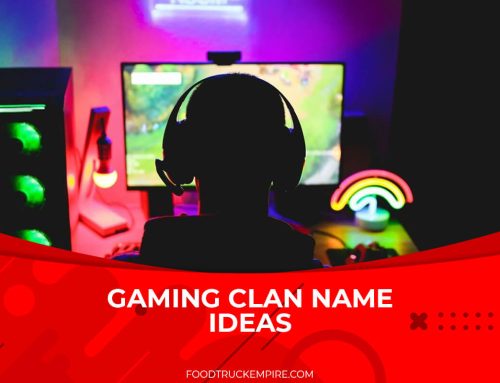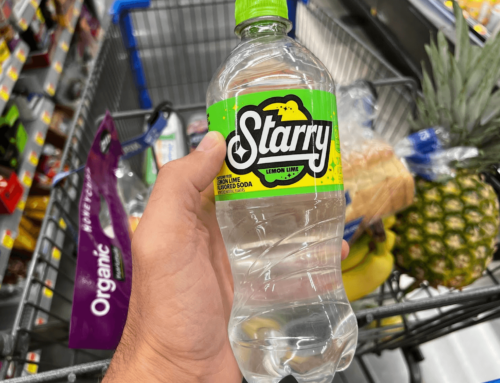The energy drink segment is currently valued over $53 billion dollars in annual sales and is said to have conquered the soda industry in the last two decades. This exciting segment of the beverage industry is seeing sales increase thanks to a growing base of people consuming these products for more energy and the popularity of the product paired with alcoholic beverages.
But have we reached peak consumption for this segment? Have the best times come and gone? Or will this industry continue expanding rapidly over the next decade?
This industry analysis offers insight into the future of the energy drink market, future trends, and specific ways brands are adapting to remain relevant through evolving consumer taste.
Global Market Trend Analysis
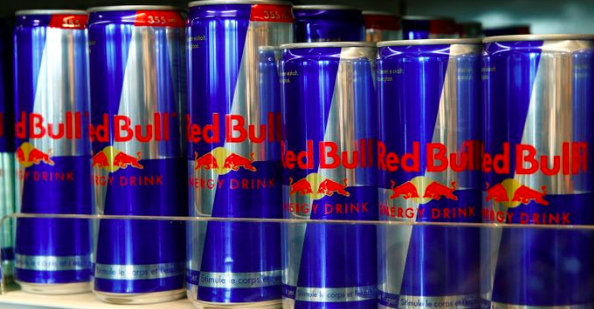
Red Bull and Monster Energy drink dominate the market, holding the largest share in the energy drink industry globally. (Business Insider)
Monster Beverage sales have grown by 9% annually since 2003. The value of the company is now estimated to be around $29 billion. (Business Insider)
The global energy drinks market is classified into Product Type (drinks, mixers, and shots); Distribution Channel (food services, hypermarkets /supermarkets, specialist stores, online retail, others) and by Geography. (Mordor Intelligence)
In the current energy drink market consumption, the United States is the largest consumer of energy drinks. (Market Watch)
Despite having its humble beginnings in Japan in the 1960s, the energy drinks segment only came to prominence in 1997, via the Austrian company Red Bull GmbH. Forbes has estimated the company’s market value at $20 billion. It has since expanded its market into developing markets such as India, Turkey, and Brazil. (Investopedia)
Older millennials are the primary consumers of the U.S. energy drinks/shots market according to a report, with 64 percent of the sample population consuming energy drinks. (Natural Products Insider)
The energy drinks market size was $53.01 billion in 2018 and is anticipated to hit $86.01 billion in 2026, registering a CAGR of 7.20 percent from 2019 to 2026 according to the latest report published by Allied Market Research. (Allied Market Research)
The energy drinks market volume is expected to hit USD 84.70 billion by 2026 growing at a CAGR of 7.3 percent from 2018 to 2026. (Market Watch)
Brought about by the increasing consumer consciousness on health and fitness, the energy drinks segment developed from being a niche product to becoming one of the fastest-growing segments in the drinks industry. (Mordor Intelligence)
Bang, a rising brand out of Weston from Florida based VPX Sports, saw a triple-digit growth of 699% and took the no. 5 spot in the energy drink industry. (Beverage Industry)
Energy Drink Consumption Trends
The demand for energy drinks is growing, globally, with the millennial population as the major consumers between the ages of 18 & 35. North America is the major mover for this market due to increasing awareness and health concerns. (Mordor Intelligence)
In the years 2003 to 2016, the popularity of energy drink consumption marked up notably for adolescents (from 0.2% to 1.4%); young adults (from 0.5% to 5.5%); as well as middle-aged adults (from 0.0% to 1.2%). (AJPM)
Within a three month span, 29% of older millennials consumed more energy drinks as compared to the 22% who consumed less. This statistic eclipses the consumer age group of 18 to 26 of which only 16% said they drank more than the 27% who said they drank less. (Natural Products Insider)
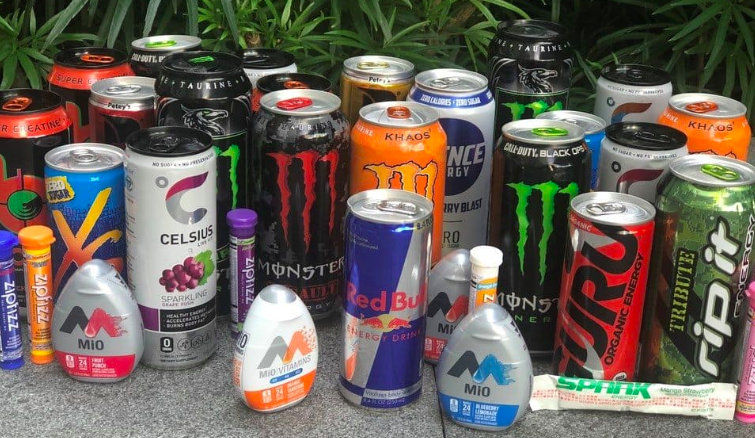
From 2003 to 2016, the per capita consumption of energy drinks rose significantly for young adults, from 1.1 to 9.7 calories. (AJPM)
In a new study by the American Journal of Preventive Medicine published by Elsevier, it has been determined that energy drink consumption in the U.S. has notably increased over the past decade among middle-aged adults, young adults, as well as adolescents. (Science Daily)
Related Reading: 37 Soft Drink Industry Statistics and Alarming Consumption Trends
Energy drink consumers had a higher total caffeine intake compared to non-consumers among adolescents (227.0 mg vs 52.1 mg); young adults (278.7 mg vs 135.3 mg); and middle-aged adults (348.8 mg vs 219.0 mg) according to a study made in consecutive years. (AJPM)
81% of U.S. consumers recognize that energy drink companies must include in their packaging the recommended daily consumption limits on energy drinks/shots. (Natural Products Insider)
Introduced in 1997 in the U.S. market, the caffeine content of energy drinks ranges from 50mg to 500mg per serving versus an eight-ounce cup of coffee which only has 95mg. (Science Daily)
Despite an increase in demand, the current indication that these energy drinks’ performance, efficacy, and safety are usually contradictory and irregular. Their main take is that their products contain high concentrations of caffeine. (Market Watch)
Energy Drink Market in the United States
In the United States, Red Bull GmbH, Monster Beverage Corporation, and Rockstar Inc. continue to hold the largest market share in the energy drink production despite diminished growth. (IBISWorld)
Millennials, teenagers, and students, the energy drink segment’s high growth rate have slowed down since 2016. This could be in part to changing consumer preferences for healthier drinks. (Euromonitor International)
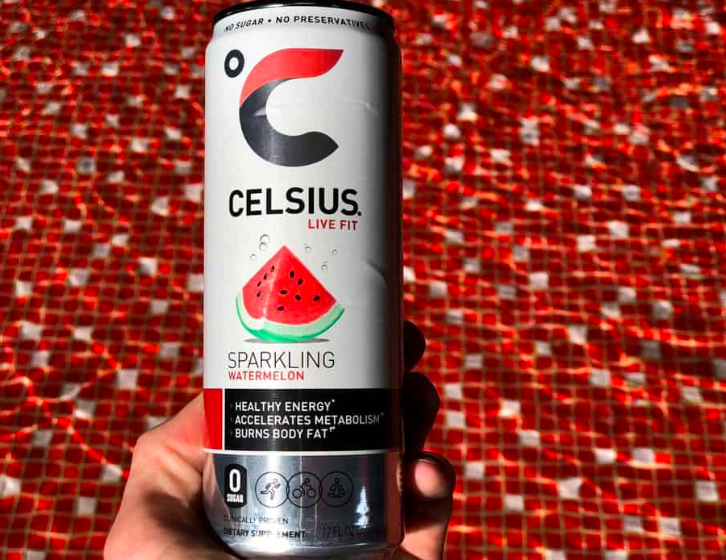
There are a lot of familiar brands that have already entered the energy beverage market. These names include Coca-Cola, Goldwin Healthcare, PepsiCo, GSK, Power Horse, Heinz, NourishCo., and Taisho Pharmaceutical Co Ltd. (Market Watch)
For 52 weeks ending on June 16, it soared above dollar sales of $11.7 billion, that’s an 11.3% increase in the same period last year according to Chicago-based Information Resources Inc. (IRI). (Beverage Industry)
2018 saw the Red Bull and Rockstar lose market share as well as reduced sales. This could be a signal of what’s ahead for established players in this market. (Euromonitor International)
Some Alarming Statistics
According to a CDC report, drinkers between the ages of 15 and 23 who mix energy drinks with alcohol are 4 times more probable with intensified drinking spree (consume six or more drinks per binge episode) than drinkers who don’t mix energy drinks with alcohol. (NCCIH)
42% of energy drink-related emergency visits involved mixing these drinks with alcohol or drugs in 2011. (NCCIH)
Energy drink-related visits to the emergency department increased in the years 2007 and 2011. 1 in 10 of these visits ended in hospitalization in 2011. (NCCIH)
Future Trends of the Energy Beverage Industry
It’s no secret that drinks filled with empty calories, caffeine, and void of any health benefits is not the trend right now. In an effort to combat these negative perceptions, we believe more beverage companies will introduce vitamins, minerals, and organic ingredients into their products.
This trend has already started to happen. It’s common to see ingredients like Vitamin B, ginseng, and Taurine included in these beverages. These ingredients suggest that the product is healthier and designed for different activities like improved athletic performance.
Beverage companies have also tied the names of their product to desired benefits of these drinks in an effort to bolster sales among different consumer segments. Some drinks are are designed and marketed with ingredients that will help improve recovery during a workout. Others beverages claim to improve focus to improve results at work or school.
Finding a key benefit that customers want and working backwards to identify ingredients that help achieve the goal will be an ongoing shift in the industry.
In Japan, where energy sales reached their peak in the early 2000s, have begun updating their products to attract female consumers. They’ve updated packing to pink and introduced new flavors like “Peachy Rasberry” in an effort to appeal to women.
According to Euromonitor International, the energy drink segment achieved $12.3 billion in sales from 2013 to 2018, which is 28.3% per year growth with a CAGR of 5.1%. (Beverage Industry)
It’s all about the big 3 in the global energy drinks market. Red Bull, Monster, and Lucozade continue to dominate the market with a combined worth of £962 million ($1.2 billion) according to a Nielsen February 2019 report. This is more than 3 quarters of branded sales figures. (The Grocer)
Diet drinks are leading the energy drinks growth despite being a small market. In 2018, their sales increased up to 16 percent in value, this accounts for $12 million of the $14.6 million growth in the global energy drinks market. (The Grocer)
The Asia-Pacific region is expected to gain in the energy drinks market in 2026, with a growth rate of 7.30 percent CAGR from 2019 through 2026. (Allied Market Research)
The non-alcoholic energy drink segment accounted for nearly 53.63 percent of the energy drink market share in 2018 based on type. (Allied Market Research)

Regular energy drinks volume sales remained at 124.6 million liters. Consequently, the resulting price hikes saw the value climb at 1.4 percent. (The Grocer)
The world we live in today is very different from about 30 or more years ago as people have become more health-conscious and on the go. Most traditional soda drinkers have looked the other way and found energy drinks more beneficial than just thirst quenchers.
These high-octane beverages can trace their roots to Japan almost five decades ago where the drink was said to be popular in the 1960s. Commencing with Lipovitan D made by a company called Taisho, the drink which contains vitamins and extra caffeine, was advertised as a therapeutic drink.
Related Reading: 27 Meal Kit Industry Statistics and Consumption Trends
Another catalyst that has bolstered sales is that these beverages are often paired with alcoholic beverages. The combination of a highly caffeinated beverages like an energy drink paired can mask the effects of alcohol like drowsiness. This leads to a sensation of being wide awake while drunk that has been linked to numerous health problems including lack of sleep and anxiety.
The industry will need to find a way to curb the negative impacts of mixing energy drinks with alcohol for longterm success. This will need to be accomplished through a combination education and public relations.
In spite of business challenges like increased competition and changing consumer preferences, the energy drink industry is expected to grow significantly in the next 5 years to over $80 billion in annual sales by 2025. The brands that are able to appeal to specific consumer segments and produce a “healthier” variation of their drinks will likely come out as winners.


